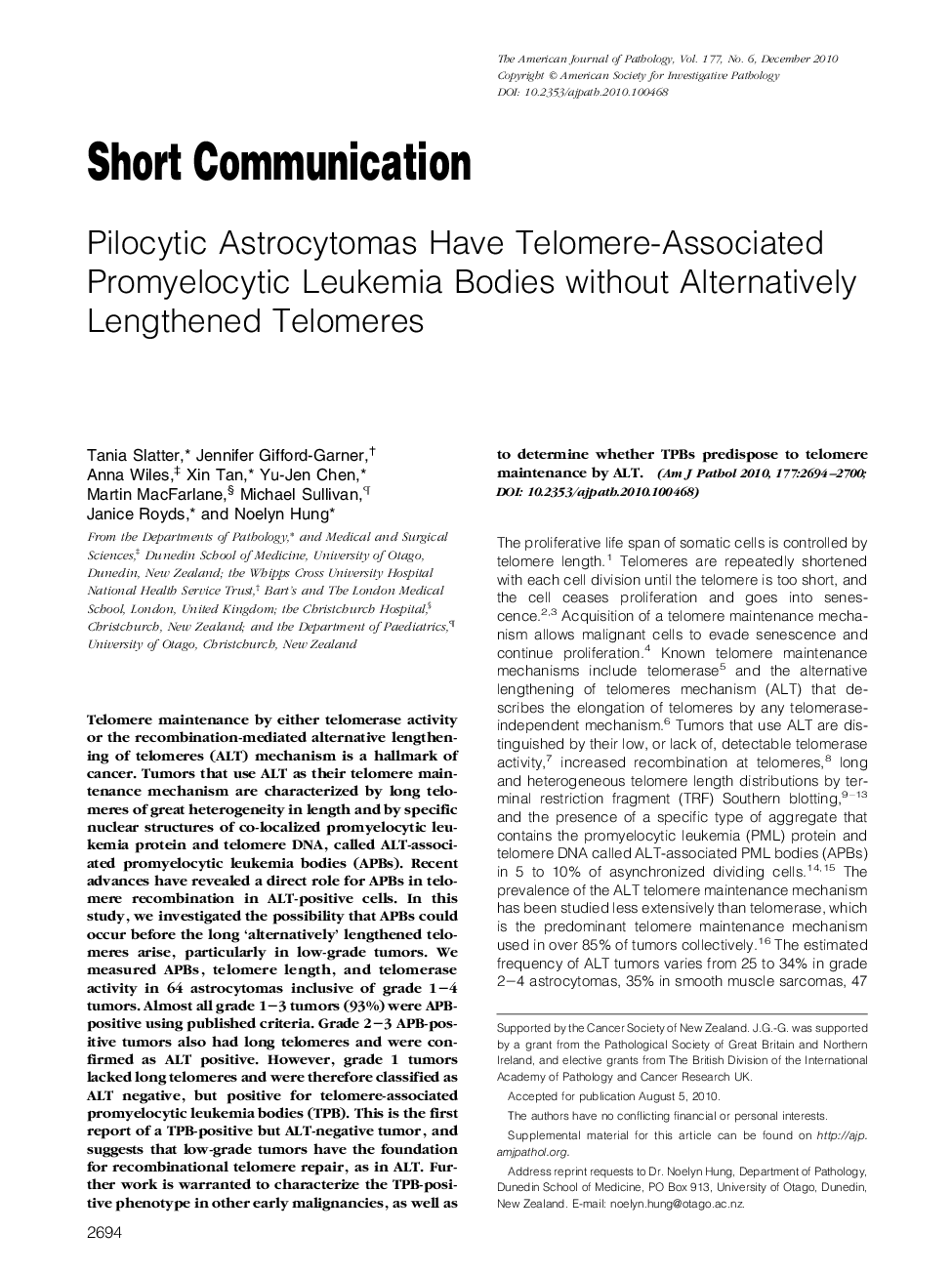| Article ID | Journal | Published Year | Pages | File Type |
|---|---|---|---|---|
| 5934434 | The American Journal of Pathology | 2010 | 7 Pages |
Abstract
Telomere maintenance by either telomerase activity or the recombination-mediated alternative lengthening of telomeres (ALT) mechanism is a hallmark of cancer. Tumors that use ALT as their telomere maintenance mechanism are characterized by long telomeres of great heterogeneity in length and by specific nuclear structures of co-localized promyelocytic leukemia protein and telomere DNA, called ALT-associated promyelocytic leukemia bodies (APBs). Recent advances have revealed a direct role for APBs in telomere recombination in ALT-positive cells. In this study, we investigated the possibility that APBs could occur before the long 'alternatively' lengthened telomeres arise, particularly in low-grade tumors. We measured APBs, telomere length, and telomerase activity in 64 astrocytomas inclusive of grade 1â4 tumors. Almost all grade 1â3 tumors (93%) were APB-positive using published criteria. Grade 2â3 APB-positive tumors also had long telomeres and were confirmed as ALT positive. However, grade 1 tumors lacked long telomeres and were therefore classified as ALT negative, but positive for telomere-associated promyelocytic leukemia bodies (TPB). This is the first report of a TPB-positive but ALT-negative tumor, and suggests that low-grade tumors have the foundation for recombinational telomere repair, as in ALT. Further work is warranted to characterize the TPB-positive phenotype in other early malignancies, as well as to determine whether TPBs predispose to telomere maintenance by ALT.
Related Topics
Health Sciences
Medicine and Dentistry
Cardiology and Cardiovascular Medicine
Authors
Tania Slatter, Jennifer Gifford-Garner, Anna Wiles, Xin Tan, Yu-Jen Chen, Martin MacFarlane, Michael Sullivan, Janice Royds, Noelyn Hung,
